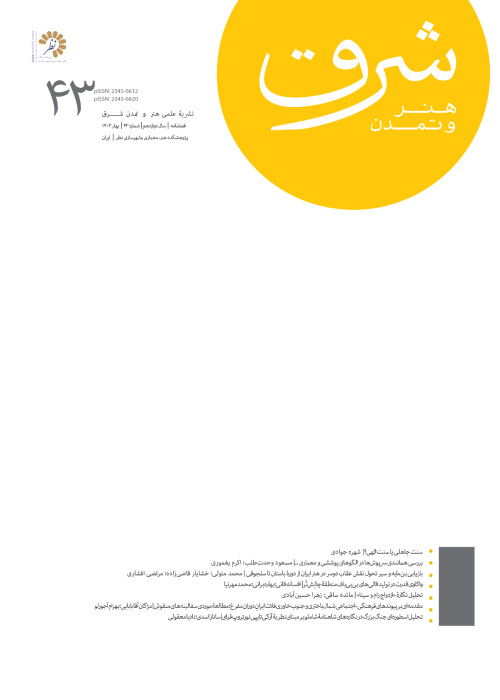A Study of the “Woman” Icon on the Seals of the Sassanid Period
This article studies the icon of women on the seals of the Sassanid period. In various parts of Iran, seals with various human (mostly male), plant, animal, and mixed motifs have long been used. Female icons were not common on seals, and a limited number of different examples of seals decorated with female motifs have been found from ancient Iran, especially the Sassanid era. This article studies the cause of the use of the role of women seen on some seals and examines the position of women in the society and government of the Sassanid era and its relationship with Anahita (goddess of water). Therefore, this study uses a descriptive-analytical method, and the data was collected through library research and articles on websites. Findings show that the presence of women on the seals of the Sassanid era shows the high and worthwhile position of women in this era. The woman is depicted not only in the form of queens and court women and beside main male characters, but also in some cases is alone and represents Anahita (symbol of love and fertility). In other cases, women are depicted with the child or in the role of wife or bride. The elegance of the depiction and the accuracy in representing the face, gender, and feminine ornaments, as well as writing the name of the queen on some seals, are the prominent features of these designs.Findings show that the presence of women on the seals of the Sassanid era, shows the high and worthy position of women in this era. The role of the woman appears not only in the form of a queen and a central figure alongside the man and the king, but in some cases as a lone and symbol of Anahita. In other cases, it is seen with the child, or in the role of spouse and in marriage ceremonies. In all cases, the elegance of the design and the accuracy in representing the features of the face, gender and the use of ornaments and the writing of the name of the woman-queen on some seals, are the prominent features of these designs.
Icon , Woman , Anahita , seal , Sassanid seal , Sassanid art
- حق عضویت دریافتی صرف حمایت از نشریات عضو و نگهداری، تکمیل و توسعه مگیران میشود.
- پرداخت حق اشتراک و دانلود مقالات اجازه بازنشر آن در سایر رسانههای چاپی و دیجیتال را به کاربر نمیدهد.



